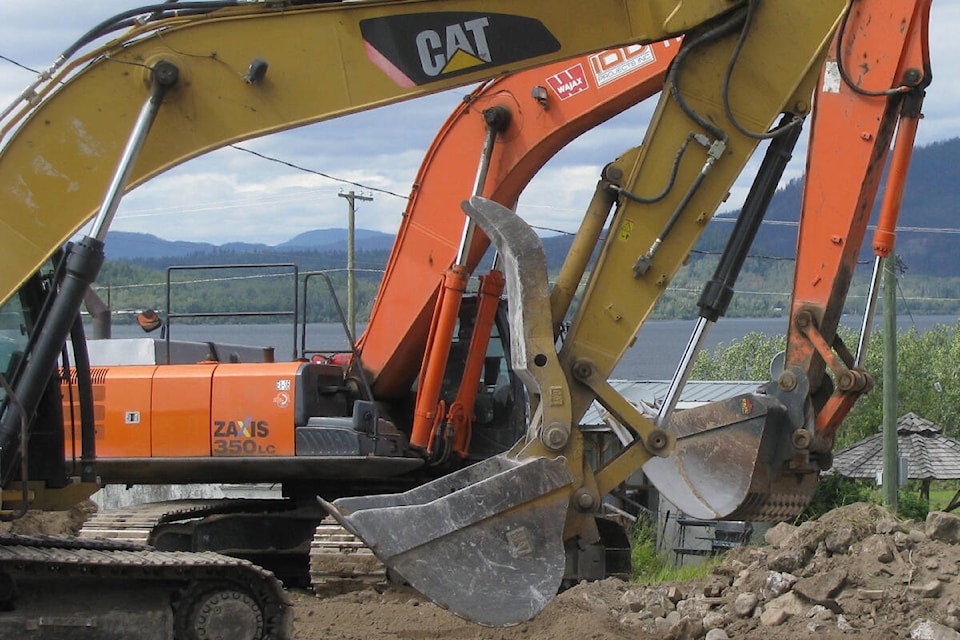Officials with local government believe there are better ways to turn major industrial projects into community benefits.
When a venture like a mine or pipeline happens in the local landscape, there is an imbalance in how much of its economic impact turns into a town’s prosperity. Unlike resident industries like forestry, agriculture and tourism, the mining and pipelining industries are examples where proponent companies contribute minimally to municipal economic development and what is spend locally is outside most communities’ control.
This was outlined in detail in a discussion paper authored by Regional District of Bulkley-Nechako (RDBN) director of planning Jason Llewellyn. It was titled Community Investment and the Environmental Assessment Process.
In it he spells out the problems and suggests solutions for these circumstances, noting it will take great lobbying effort to higher levels of government. He sees the environmental assessment process as the key point at which companies and communities can better work together on the long-term needs of the municipalities through which these projects pass.
“The incentive for industry to invest in local communities is reduced as they are not reliant on the region’s ability to attract workers. This compounds the long-standing inequity related to resources, profits, and revenues being generated in the region with limited return to the local community,” Llewellyn wrote. “This situation presents a significant challenge for RDBN communities struggling with aging infrastructure, an aging homogeneous housing stock, and land values that are too low in relation to the cost of development.
“This challenge is compounded by the social and economic implications related to the reliance on work camps to accommodate transient workers in the region. These workers use local infrastructure, resources, and services without bringing adequate new revenue to the service providers or adequately contributing to the local tax base.”
Companies are not currently required to consult with communities or follow community suggestions such as placing a work camp in a place where a future subdivision could be built, so the camp’s utility needs can then be turned into a municipal benefit; or the camp’s housing be in the kind of modular structures that could be turned into permanent housing once the project is finished. These are but two examples of many that Llewellyn highlighted.
One of the most significant obstacles, he said, based on many projects in the recent past that have given short returns to the area’s communities, is the late and shallow place communities have in the environmental assessment process. Companies can make vague positive platitudes to towns and villages, but don’t have to actually fulfill much because the provincial system doesn’t force those conversations to happen early and doesn’t force much in the way of living up to specific promises.
“Any promise, commitment, or solution proposed by a proponent outside of the EA (environmental assessment) process is not secured and follow-through is entirely at the discretion of the proponent,” he said.
Provincial and federal governments must feel the pressure to make community-based changes to the system, Llewellyn suggested, and better industrial project coordination should be arranged among the municipalities of the region and also the First Nations of the region.
“First Nations play an important role in the EA process and their input carries much weight with the Province and industry. Many of the RDBN’s issues and concerns may be shared by First Nations, and our positions would be strengthened if the RDBN board and First Nations coordinated input,” the discussion paper said.
RDBN chair Mark Parker called the report out as particularly good work, a view echoed by a number of the mayors and directors around the table.
“I think when we are dealing with industry, it is very calculated,” said Houston mayor Shane Brienen. “We’ve seen it a few times that they know something is coming for months but they put it before us with a three or four week window, or less, and it comes to this point where something’s got to move, so I’m really glad to see this, it’s a great write-up. I’d like to suggest that we share this with a couple of the other northern regional districts, and I’d also like to suggest that we work them into motions for UBCM for recommendations there (Union of BC Municipalities). Thanks, good report, I really enjoyed it.”
Burns Lake Rural director Michael Riis-Christianson agreed that the previous process “has been fragmented over the past four years, in terms of our experiences, and it’s nice to bring it all together.”
Parker said “you used the word calculated, and the farther we go down these roads we realize that. These companies know the systems and they know the process and how to get where they need to be. We need to be prepared.”
Granisle mayor Linda McGuire called it “a great read” and noted that there was a $30,000 estimated cost for RDBN to do a study for proponents on Temporary Use Permits (needed for establishing a work camp, and other construction requirements). McGuire suggested costs like this should be billed to the proponent “and let them understand that we are serious” about visiting industry paying their share to operate the communities in which they work.
The discussion was expected to carry into UBCM resolution-building that will lead to province-wide dialogue this fall when the municipalities and Regional Districts of B.C. get together at their annual convention.
